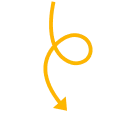Epithelial Tissue
Epithelial Tissue
Most of our body mass is made of muscle and connective tissue like bone, fat, and liquids.
Meanwhile, epithelial tissue doesn’t make up a ton of your body mass but still shows up in crucial spots around the body and does a handful of important jobs.
Epithelium’s two main jobs are
- forming layers of cells that cover internal and external surfaces like the lining of your blood vessels and skin.
- secreting different substances either within the body or outside of the body. In some cases they’re responsible for forming the functional bulk of certain organs, what’s called parenchyma. For instance, the liver is 80% epithelial liver cell, or hepatocyte, by mass.
Epithelium can come in all kinds of different specialised tissue types that lets them do other unique jobs depending on where we find them, but most of the time we care about them as protective layers and secreting cells.
So when we look at images of epithelial tissue, we have a big challenge: Epithelium is usually mixed in with all kinds of different tissue types, so our first job is to get our bearings and identify the tissue of interest.
The cool thing about epithelial cells though is that they’re polar — they have distinct top and bottom poles that are oriented around a basement membrane which separates it from the structures around it.
Between the cells and basement membrane is a layer of connective tissue that glues the cells to the membrane. It is called the lamina propria and it has blood vessels to feed the cells above. It touches the basal surface.
The opposite surface is called the apical pole. Cilia and microvilli can be seen. (eg. lungs).
In the intestine the apical pole is towards a lumen. Lumen means the empty inner part of a tube. Lateral faces of the epithelial cells communicate through the gap junctions (ions), tight junctions (proteins), and desmosomes (anchor cells together).
Epithelial tissue is avascular. It gets its oxygen and nutrients by diffusion from the capillaries in the lamina propria. And lamina peoria supply stem cells to replace old epithelial cells. Our skin’s epithelium does this really quickly, which is why it grows back so fast if we scrape off a layer.
Naming epithelial Tissue
When naming, we consider the number of layers and cell shape.
When we consider the shape we have
- squamous cells which are squished flat like pancakes. Because of that, they have a squishy, oval shaped nucleus and not a whole lot of organelles within them.
- Cuboidal, or cubed shaped epithelium, which typically have large, round nuclei and plenty of organelles.
- columnar, or column shaped. A lot of those specialised epithelial cells like mucus secreting cells are columnar.
Once we know the shape of the cell, we need to arrange them on the basement membrane. That part of their organisation makes up the first part of their name.
- If it’s organised into a single sheet, it’s called simple epithelium.
- simple squamous epithelium which lines blood vessels. Its thinness makes it ideal for when you need to pass /some/ substances like oxygen through but still want it to keep blood contained.
- simple cuboidal for secretion of substances like in the seminiferous tubules in the testis.
- simple columnar like in the walls of the gastrointestinal tract that can also secrete and absorb things.
- The caveat is pseudostratified epithelium, which is technically a type of /simple/ columnar tissue, but it looks like it’s stacked into multiple layers.
- stratified epithelium happens anytime you have two or more layers of epithelial cells.
- You can have stratified simple, stratified cuboidal, and stratified columnar.
- In stratified epithelium, the farther away the cells get from that source of nutrients, the less nutrients they get. So we find a special type of stratified epithelium called keratinized epithelium, which is what it sounds like. Those epithelial cells are far away from the lamina propria, they die, they lose their nucleus and get filled with the tough protein keratin. If you’ve heard that your top layer of skin is all dead cells, it’s true, because it’s this stuff.
- transitional epithelium — stacks of different types of epithelial cells that transition from one cell type to another. We mostly see this in anatomy that needs to stretch — like bladder tissue, what sometimes gets called urothelium.
Glandular Function of Epithelium
There are epithelial cells which, either pump things into the bloodstream or receive messages from the bloodstream.
We call these kinds of cells glandular epithelium, and when we get a bunch of them together, they can form full organs like the thyroid gland. We divide glands further based on how and where they release their message.
- They might send and receive messages outside the body, what are called exocrine glands, or
- within the body, what are called endocrine glands. If that name sounds familiar, it’s because the endocrine system is responsible for hormones.
When endocrine glands secrete hormones, they travel through the bloodstream, until they arrive at its target tissue, then they communicate their message. And these glands can show up in a lot of places.
- Like in the pineal gland in the brain. It’s home to nervous tissue like astrocytes, but also to epithelial cells called pinealocytes that pump out the hormone melatonin.
- You also have endocrine cells alongside other tissues. For instance, the cells responsible for making sperm are in the testes, but so are different cells called Leydig cells that secrete testosterone from the testes into the bloodstream.
But some glands don’t pump things into the body at all, exocrine glands pump them outside the body or into different cavities within the body.
- For instance, goblet cells in the GI tract secrete a protective layer of mucus out into the intestine, which is technically outside of our bodies.
- Or salivary glands — they secrete a bunch of enzymes and proteins into the saliva. Those enzymes aren’t communicating anything like a hormone would, so it’s an exocrine gland.
- Another example are apocrine glands, a subtype of exocrine gland that gives off odorants. Something that carries a smell is more useful if it travels outside the body to a nose, so it’s an exocrine gland, not endocrine.
One of the main places we see epithelial cells is in the digestive system. Therefore I will write more information in the digestive system post. These short notes are enough for this section.



